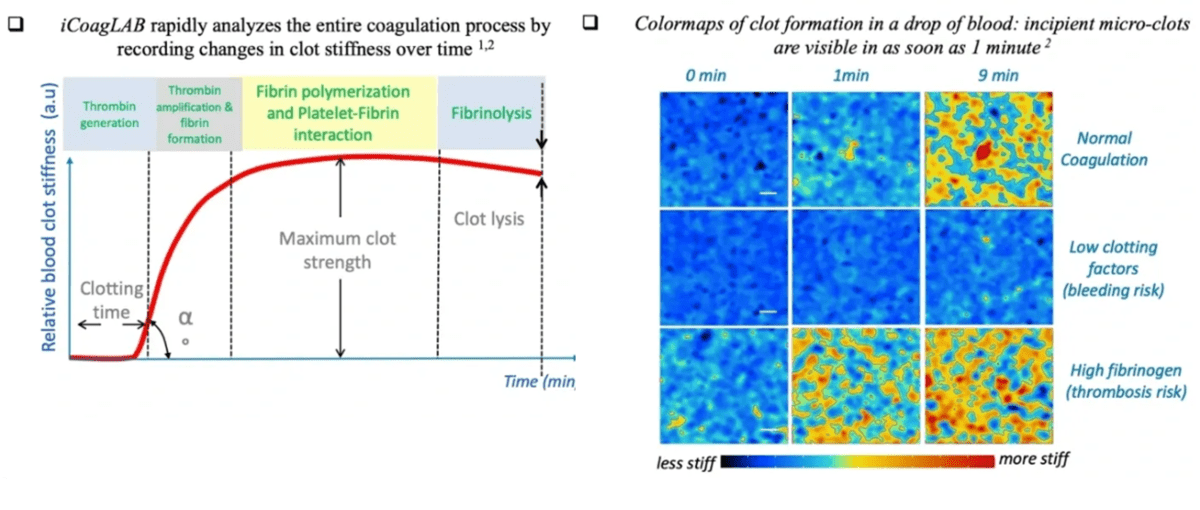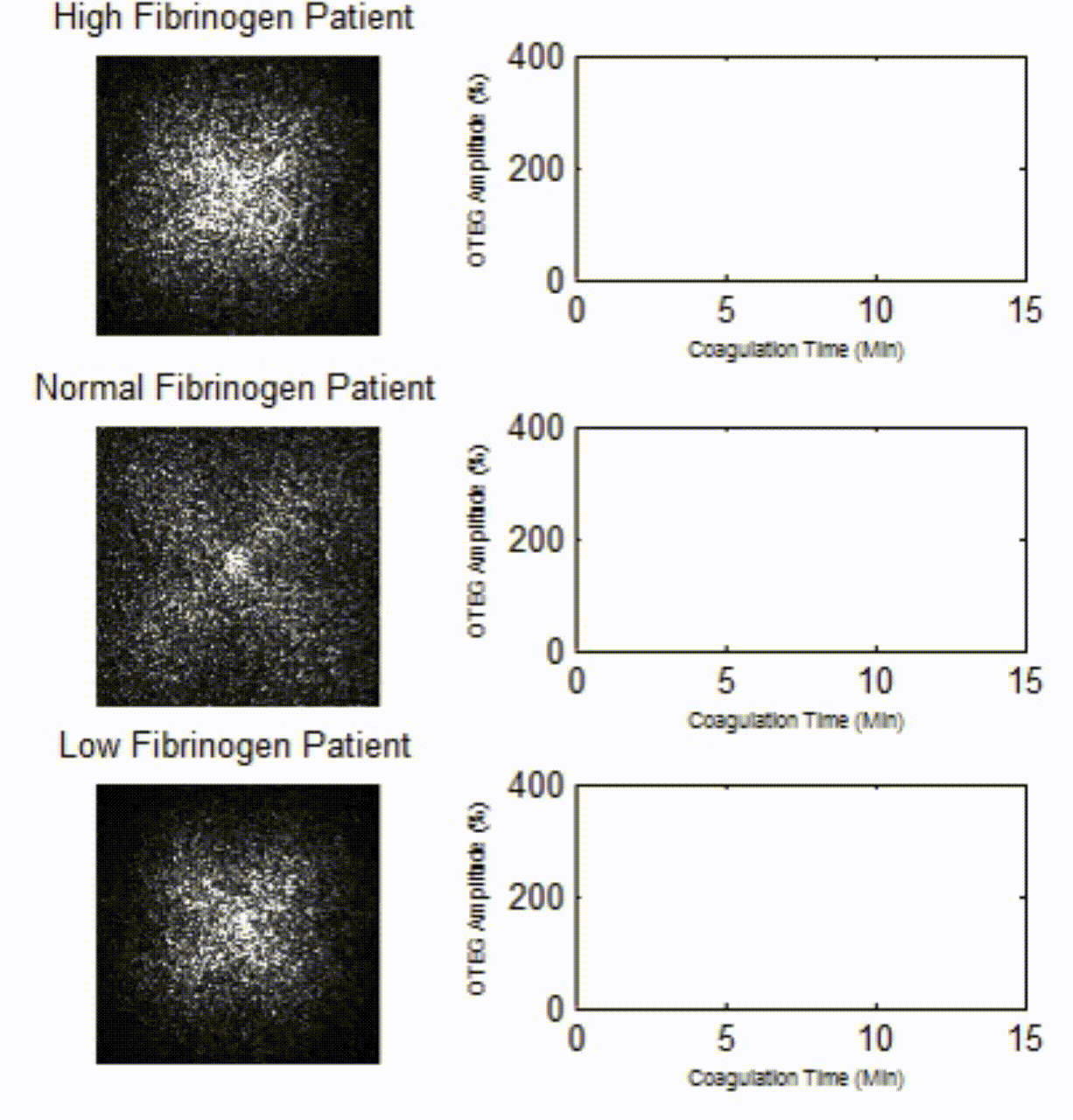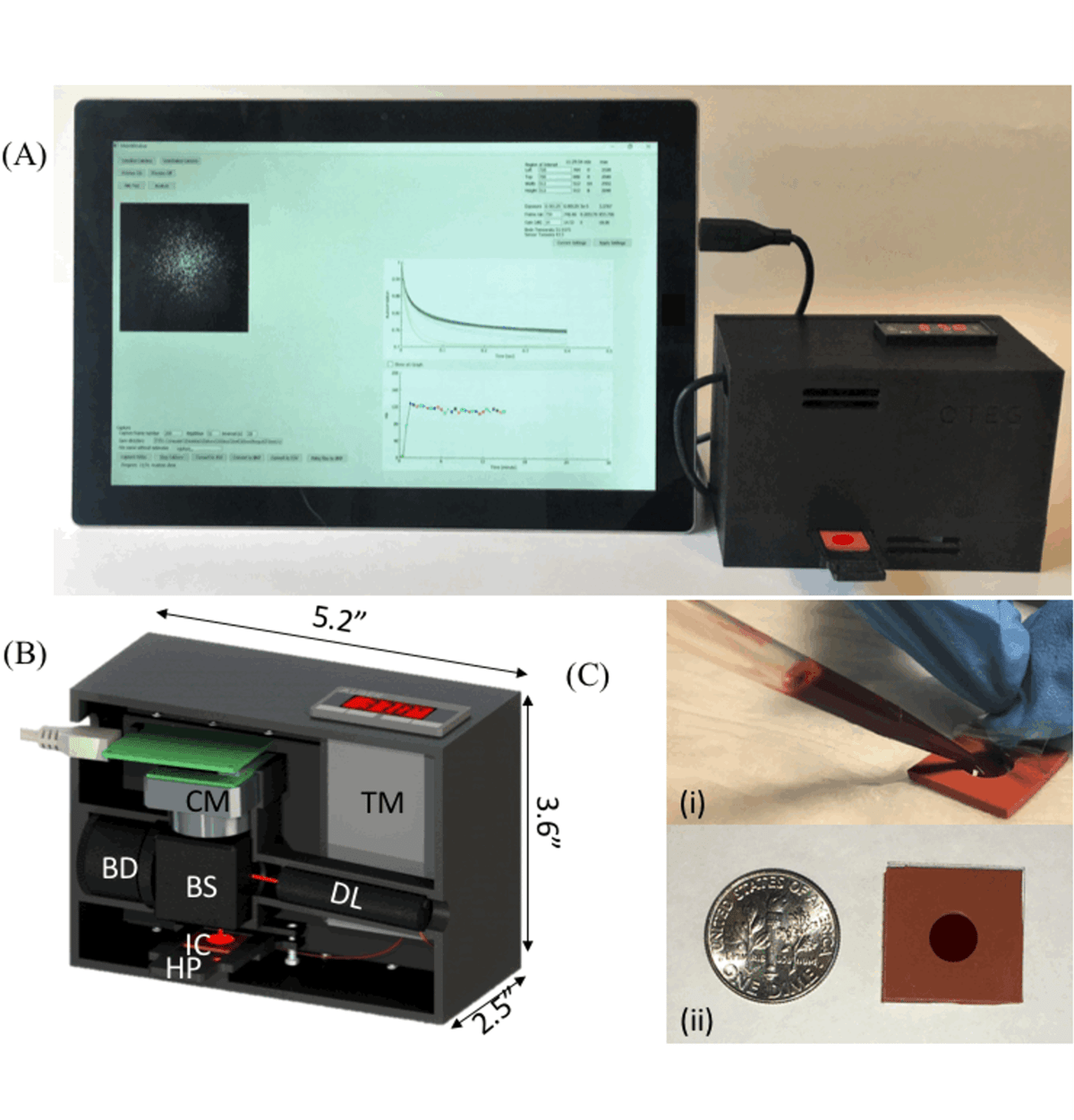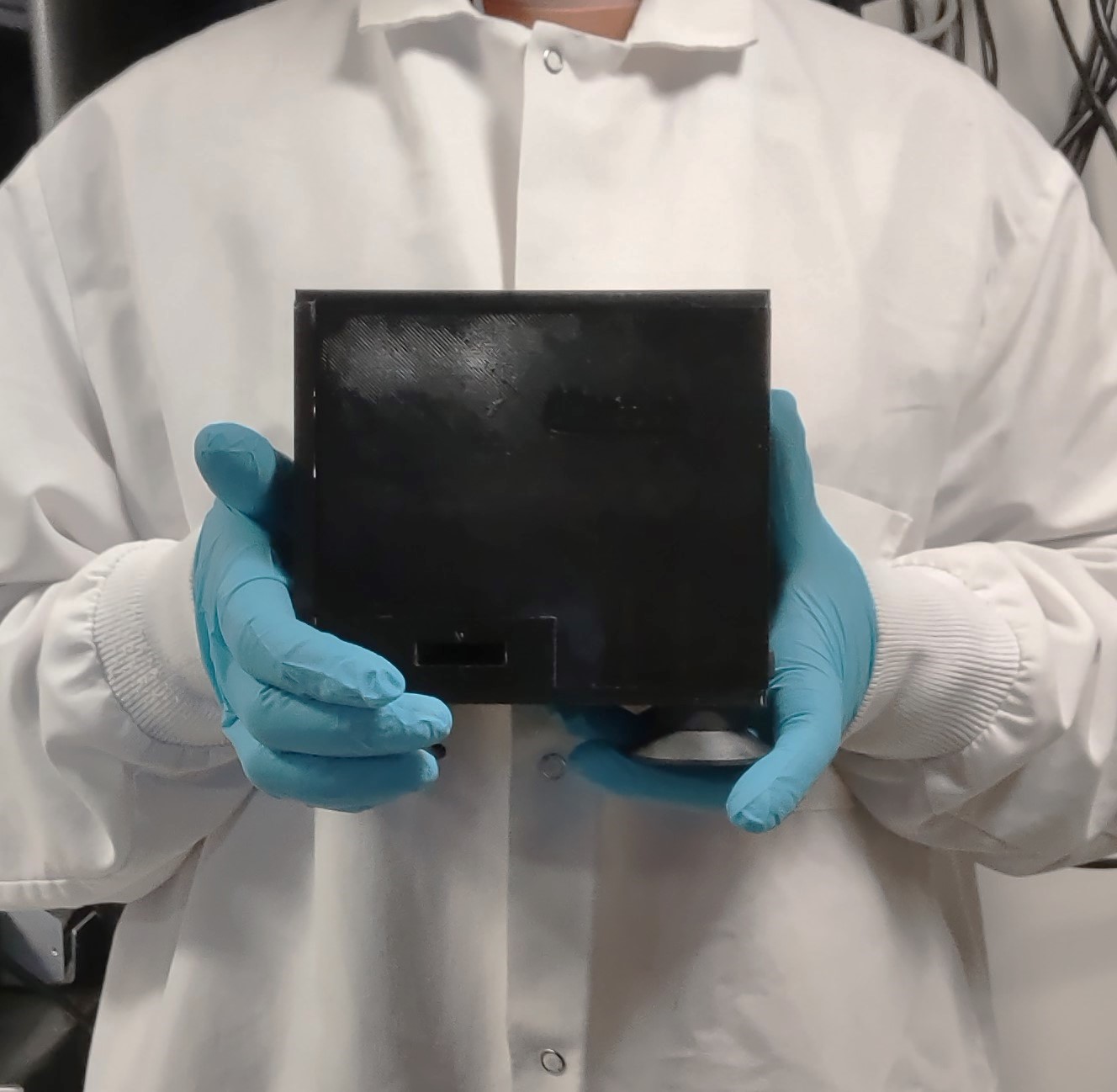Coagulation and Platelet Sensing


Our laboratory has developed a low-cost, multi-functional blood coagulation sensor that can measure a patient's coagulation status within minutes using just one drop of blood. This hand-held sensor can identify and manage patients with a high risk of life-threatening bleeding or hemorrhage, which is one of the major causes of preventable in-hospital deaths. It also allows for rapid coagulation testing in the home or primary care setting for over 15 million patients worldwide who receive oral anticoagulants to prevent thrombosis, the leading cause of death worldwide. Our coagulation sensor combines the strengths of a low-cost, hand-held module with the ability to diagnose the underlying coagulation defect within a fraction of the time and cost of conventional coagulation tests. Our approach, Optical Thromboelastography (OTEG) or iCoagLAB, uses a disposable cartridge and laser speckle intensity fluctuations to analyze blood viscoelastic properties during coagulation and recover information about multiple coagulation metrics. OTEG's comprehensive coagulation profiling capabilities at the bedside can improve patient outcomes by identifying high-risk patients, tailoring blood transfusion and anti-coagulation protocols, and monitoring hemostasis during therapy.

Running coagulation experiment via iCoagLAB





